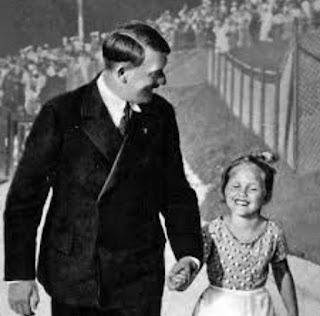Dieppe 19th August 1942.
The raid began at 04.50 on 19 August, with attacks on the flanking coastal batteries, from west to east.
These included Varengeville (Number 4 Commando), Pourville (the South Saskatchewan Regiment and the Queen's Own Cameron Highlanders of Canada), Puys (the Royal Regiment of Canada), and Berneval (Number 3 Commando).
By this time, however, the element of surprise that the planners had counted on was lost. Some of the landing craft escorts had already exchanged shots with a small German convoy off Puys and Berneval at 03.48.
Despite this, Number 4 Commando successfully stormed the Varengeville battery. This was the one unit that captured all of its objectives that day. Only 18 men from Number 3 Commando got ashore in the right place.
Nevertheless, for a time they managed to distract the Berneval battery to such good effect that the gunners fired wildly all over the place, but the commandos were eventually forced to withdraw in the face of superior enemy forces.
At Puys, the Royal Regiment of Canada was annihilated. Just 60 men out of 543 were extracted from the beach.
And only a handful of the men of the South Saskatchewan Regiment reached their objectives, with others from this regiment landing in the wrong place.
The Queen's Own Cameron Highlanders of Canada, despite being landed late, did manage to penetrate further inland than any other troops that day, but they were soon forced back as German reinforcements rushed to the scene.
Half an hour later the main frontal assault by the Essex Scottish Regiment and Royal Hamilton Light Infantry started, supported by 27 Churchill tanks of the 14th Canadian Army Tank Regiment.
The tracks of most of the tanks were stripped as they were driven on to the shingle beach, and the bogged down vehicles became sitting ducks for German anti-tank guns.
Those tanks that did cross the sea wall were stopped by concrete roadblocks. The infantry were slaughtered on the beach by vicious cross-fire from machine-guns hidden in the cliffs. Supporting fire by naval destroyers was far too light to have much effect.
To make things worse, Canadian Major General Roberts could not see the objective, because of a smoke screen laid by ships in support of the landings.
As a result, acting on incorrect information and unaware of the mayhem on the beaches, he now made the mistake of reinforcing failure and sent in his two reserve units.
Les Fusiliers Mont-Royal, launched straight at the centre of the town, were pinned down under the cliffs, and Roberts ordered the Royal Marine Commando to land in order to support them.
This was a completely new task, involving passing through the town and attacking batteries on the east headland.
The last minute change of plan caused utter chaos. The commanding officer had to transfer all his men from gunboats and motor boats into landing craft used in the earlier waves, and brief them on the new mission in very short order.
Many of the RMC craft were hit and disabled on the run-in. Those men that did reach the shore were either killed or captured.
The commanding officer, Lieutenant Colonel 'Tigger' Phillipps, seeing that the mission was suicidal, stood up on the stern of his craft and signalled to those following him that they should turn back. He was killed a few moments later.
.
At 11.00, under heavy fire, the withdrawal from the beaches began. It was completed by 14.00. Casualties from the raid included 3,367 Canadians killed, wounded or taken prisoner, and 275 British commandos.
The Royal Navy lost one destroyer and 33 landing craft, suffering 550 dead and wounded. The RAF lost 106 aircraft to the Luftwaffe's 48. The German army casualties were 591.








































